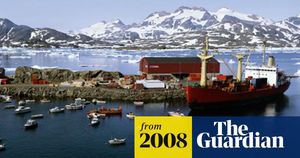NEWPORT — Kristi Noem, the new Secretary of the Department of Homeland Security, made headlines this week with her visit to the Northeast Kingdom of Vermont. Her unannounced meeting with U.S. Customs and Border Protection personnel drew attention not only for its immediate purpose but also for its emotional backdrop. The visit came shortly after the tragic loss of U.S. Border Patrol Agent David "Chris" Maland, who was killed during a traffic stop along Interstate 91 on January 20.
Noem arrived to find the Border Patrol grappling with the aftermath of this loss, which weighed heavily on the agency, drawing somber reflections from her hosts. Maland was 44 years old when he was fatally shot, and two individuals were involved in the incident—one now faces federal charges, and the other was killed during the exchange of gunfire.
During her visit, Noem expressed shock at discovering some basic equipment shortages among the border patrol agents, which included the need for winter snow tires. This oversight raised questions about the preparedness and resources allocated to those safeguarding U.S. borders, especially when cold weather hits.
Critics, meanwhile, seized upon another aspect of Noem's visit: her seemingly endless parade of different outfits. The social media commentary surrounding her various ensembles only served to overshadow the gravity of her visit. One critic quipped, "She’s like Barbie, different action outfit for every day of the week," highlighting the disconnect between the seriousness of the topic she was addressing and the optics of her appearance.
This juxtaposition of Noem's official duties and her fashion choices has sparked debate. While her supporters laud her ability to bring attention to pressing border security issues, detractors worry her focus on personal branding may undermine her authority and effectiveness.
Noem's visit aimed squarely at addressing the urgent needs of border security—something she positioned as pivotal during her discussions with border patrol officials. The fact there are personnel at the border lacking even basic winter equipment was pointed out as alarming, particularly following the tragic incident involving Agent Maland.
With the enforcement of immigration laws at stake and various administrative challenges faced by local customs and border protection officers, more effective funding and strategizing are becoming increasingly imperative. Acknowledging such needs, Noem’s feedback and plans might signal potential changes or initiatives aimed to bolster these agencies.
Yet, as Noem navigates her new role, the public perception of her appears mixed. On one hand, her administrative positions champion tangible issues; on the other, the scrutiny of her public persona leaves some questioning whether she is taken seriously amid the ample media coverage of her wardrobe choices.
Noem's approach appears to ride the line between seriousness and spectacle. While arriving to discuss life and death matters—facilitated by the recent murder of Agent Maland—there is also the challenge of being perceived as effective and sincere, which may be clouded by her public image and reactions to her appearance.
The rhetoric surrounding this visit encapsulates the broader societal discussions surrounding politicians who juggle their professional responsibilities with public personas heavily influenced by opinion on contemporary culture. This raises questions about whether Noem will be able to achieve the delicate balance needed to successfully govern and represent the needs of those affected by border conditions and immigration policies.
Looking forward, the conversations sparked by Noem’s visit should center more on what needs to be done about the equipment shortages and how to support the brave men and women of the border patrol tasked with protecting the U.S.—a part of her responsibility as Secretary of Homeland Security.
Overall, Kristi Noem's visit exposed both pressing needs for enhancement of border patrol capabilities, and the contrasting narrative of her public image and political engagement, which may shape public perception as she continues to navigate these complex waters.



